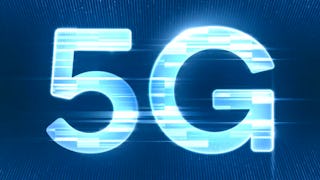This course will provide an introduction and history of cellular communication systems that have changed our lives during the recent four decades and will become an essential and inseparable part of human life. The principles of wireless communication theory are covered with emphasis on the essential concept delivery to non-major learners in the easiest way. Then, it will be covered how such principles are realized and how multimedia services can be delivered in practical LTE cellular systems by which learners are connected and enjoys together in their lives.

Gain next-level skills with Coursera Plus for $199 (regularly $399). Save now.

Wireless Communications for Everybody



Instructors: Kwang-Soon Kim
75,716 already enrolled
Included with
(2,562 reviews)
Skills you'll gain
Details to know

Add to your LinkedIn profile
12 assignments
See how employees at top companies are mastering in-demand skills

There are 6 modules in this course
In this part of the course, we will learn the introduction and history of cellular communication system. First, we will take a example of cellular communication system with cell phone. And then, learn about the what a cellular system is and how it has been developed so far. Lastly, we will briefly look into the concepts of future cellular systems.
What's included
5 videos2 assignments2 discussion prompts
In this part of the course, we will learn the fundamental principles of wireless communication theory. I will raise five fundamental questions in the first lecture as follows: i) 'how can we represent information into a binary format?', ii) 'how can information be transferred?', iii) 'how does wireless digital MODEM work?', iv) 'how can high-rate data be delivered reliably?', and v) 'how can many users access simultaneously?'. During the following 5 lectures, you will have the answers.
What's included
6 videos2 assignments2 discussion prompts
In this part of the course, we will discuss the basic concept of wireless resource management. I will raise six interesting questions as follows: i) 'how does the interference affect the capacity of wireless networks?', ii) 'why does the cellular system look like as of today?', iii) 'Increasing the number of cells increases the capacity?', iv) 'how is 5G cellular being shaped?', v) 'how does the interference management increase the capacity?' and Ⅵ) 'how does scheduling increase the average capacity?'.
What's included
6 videos2 assignments2 discussion prompts
In this part of the course, we will learn how multiple antennas can be efficiently used in different strategies for communication system enhancement. First, we look in to the basics of antenna, and then learn about the three main gains that are achievable by multiple antennas: array, diversity, and spatial multiplexing. Lastly, we briefly look in to the concepts of single-user MIMO and multi-user MIMO.
What's included
5 videos2 assignments2 discussion prompts
In this part of the course, we will learn how the fundamental principles of wireless communication theory, resource management, and multiple antenna technology are implemented in the LTE system.
What's included
3 videos2 assignments3 discussion prompts
In this course, we will discuss LTE cellular networks.
What's included
5 videos2 assignments2 discussion prompts
Instructors



Offered by
Explore more from Electrical Engineering
 Status: Preview
Status: Preview Status: Preview
Status: PreviewQualcomm Academy
 Status: Preview
Status: PreviewThe University of Notre Dame
 Status: Free Trial
Status: Free Trial
Why people choose Coursera for their career




Learner reviews
2,562 reviews
- 5 stars
73.45%
- 4 stars
21.11%
- 3 stars
4.21%
- 2 stars
0.58%
- 1 star
0.62%
Showing 3 of 2562
Reviewed on Sep 5, 2020
it was a wonderful and very informative experience. it helped me to get a definitive and anticipative idea about my masters subject which I am gonna to pursue and thankyou Coursera.
Reviewed on Mar 26, 2021
Really well taught with covering a large range of concepts. Starts with the very basic and ends with the most recent applications of Wireless Communication. Recommended!
Reviewed on Jan 27, 2019
I liked the course. Although there were lectures a bit complicated for perception. I needed a course to get an initial understanding of the work of cellular communication. thank

Open new doors with Coursera Plus
Unlimited access to 10,000+ world-class courses, hands-on projects, and job-ready certificate programs - all included in your subscription
Advance your career with an online degree
Earn a degree from world-class universities - 100% online
Join over 3,400 global companies that choose Coursera for Business
Upskill your employees to excel in the digital economy
Frequently asked questions
To access the course materials, assignments and to earn a Certificate, you will need to purchase the Certificate experience when you enroll in a course. You can try a Free Trial instead, or apply for Financial Aid. The course may offer 'Full Course, No Certificate' instead. This option lets you see all course materials, submit required assessments, and get a final grade. This also means that you will not be able to purchase a Certificate experience.
When you purchase a Certificate you get access to all course materials, including graded assignments. Upon completing the course, your electronic Certificate will be added to your Accomplishments page - from there, you can print your Certificate or add it to your LinkedIn profile.
Yes. In select learning programs, you can apply for financial aid or a scholarship if you can’t afford the enrollment fee. If fin aid or scholarship is available for your learning program selection, you’ll find a link to apply on the description page.
More questions
Financial aid available,



